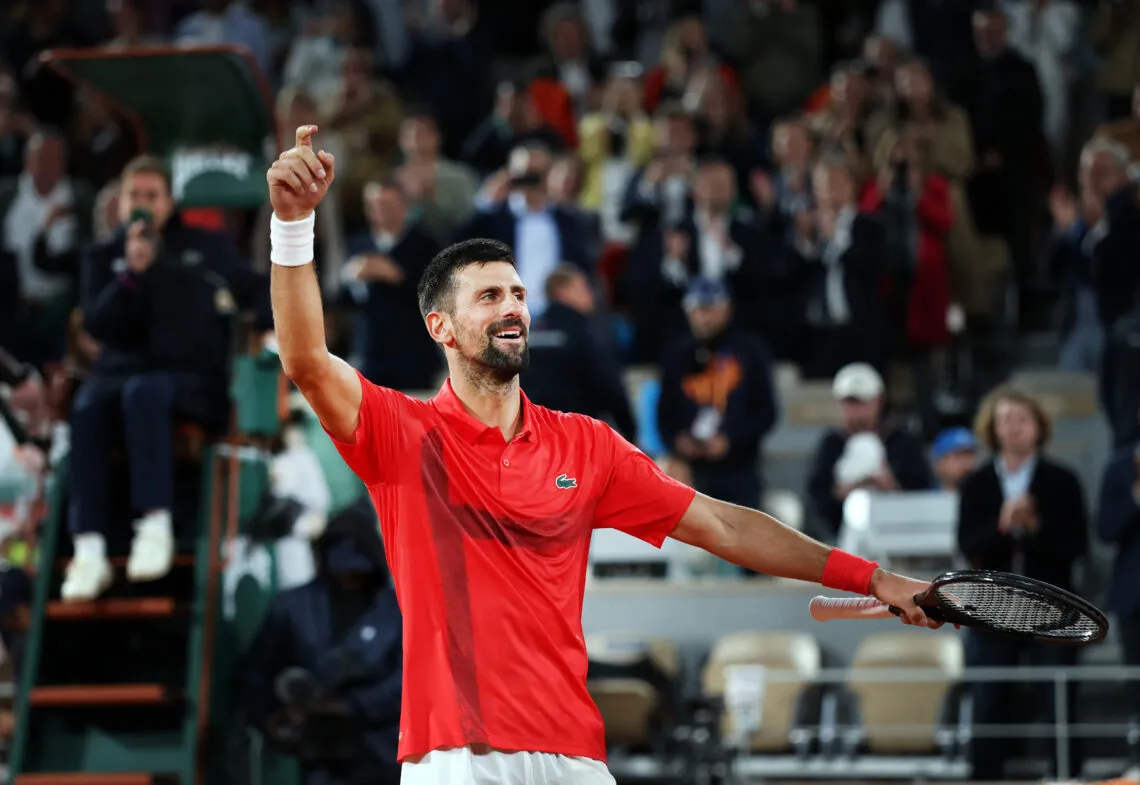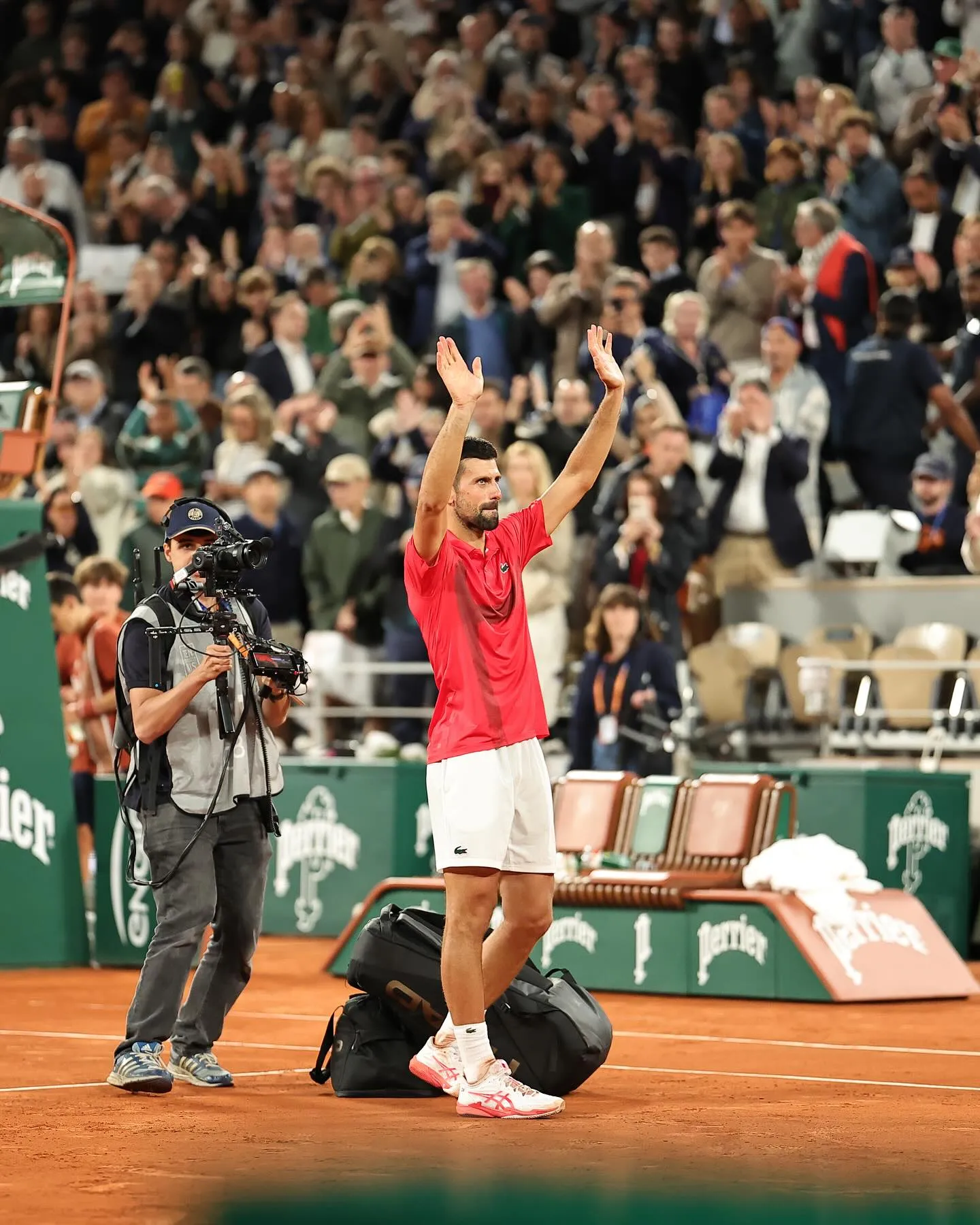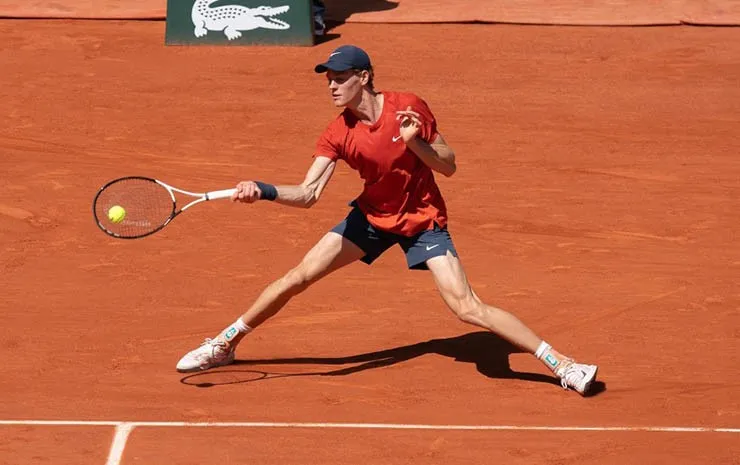

Djokovic’s Headache: Why Sinner Remains the “Unsolved Equation”?
In the high-stakes world of professional tennis, every top athlete represents a complex challenge to their rivals. Among these, Jannik Sinner has emerged as a particularly confounding figure — a rising star whose talent and tenacity continue to puzzle even the most experienced players. For Novak Djokovic, one of the greatest players in tennis history, Sinner remains an enigmatic opponent — a “puzzle yet to be solved” that keeps Djokovic on his toes both mentally and strategically.

This article delves deeply into the reasons behind why Sinner continues to present an unsolved challenge to Djokovic, exploring the young Italian’s unique style, mental resilience, and tactical evolution. We will also examine the psychological impact this rivalry has on Djokovic and what it means for the future of men’s tennis.
The Rise of Jannik Sinner: A New Force in Tennis
Jannik Sinner’s journey in tennis has been nothing short of remarkable. Emerging from the northern Italian town of San Candido, Sinner quickly ascended the ranks with a blend of powerful groundstrokes, exceptional court coverage, and an uncanny ability to remain calm under pressure. His rapid rise to the ATP Top 10 by the age of 21 marked him as one of the most promising young talents in the sport.
What makes Sinner particularly difficult for Djokovic and others is his unorthodox blend of power and precision. Unlike many players who rely solely on aggression or defense, Sinner is capable of shifting effortlessly between both. He can launch powerful baseline winners but also adopt a more tactical approach, constructing points patiently when needed. This unpredictability forces opponents to constantly adjust their strategies, often leading to frustration and unforced errors.
Djokovic, known for his exceptional defensive skills and tactical intelligence, recognizes the threat that Sinner poses. Yet, even with his decades of experience, Sinner’s evolving game has created unique challenges that prevent Djokovic from settling comfortably into a winning rhythm.
Tactical Complexity: Why Sinner is Hard to Read
One of the core reasons Sinner remains a difficult puzzle is his tactical versatility. Unlike players who have a more defined, consistent style, Sinner adapts fluidly to different opponents and match situations. Against defensive players, he increases aggression, attempting to shorten rallies. Against aggressive players, he often extends points, employing clever angles and deep shots to create openings.
This fluidity is exemplified by Sinner’s ability to disguise his shot selection. His compact swing allows him to hit winners from a variety of positions on the court, making it extremely challenging for opponents to anticipate his next move. Moreover, Sinner’s excellent footwork and balance allow him to execute shots even under duress, minimizing easy opportunities for Djokovic to capitalize on mistakes.
Djokovic’s strength lies in his ability to read opponents and anticipate shots. However, Sinner’s diverse shot repertoire and changing pace complicate this process. In many matches, Djokovic finds himself caught off guard by Sinner’s sudden shifts in tempo and direction, leading to uncharacteristic lapses.
The Mental Factor: Sinner’s Composure vs. Djokovic’s Pressure
Mental toughness is often cited as the defining trait of elite athletes, and in tennis, it can make the difference between victory and defeat in tight matches. Djokovic’s legendary mental resilience has propelled him to countless comebacks and clutch performances. Yet against Sinner, Djokovic has sometimes appeared unsettled, especially in key moments.
Sinner’s remarkable composure under pressure belies his youth. Time and again, he has demonstrated an ability to maintain focus and confidence, even when facing one of the greatest players in history on the biggest stages. This mental steadiness allows Sinner to play his game without succumbing to intimidation or anxiety.
In contrast, Djokovic occasionally exhibits signs of frustration when matches with Sinner become prolonged battles of attrition. The unpredictability of Sinner’s game and his refusal to give up easy points can wear down even the most seasoned champions. This mental pressure creates openings for Sinner to seize momentum, often at critical turning points.
Physical Attributes and Conditioning: Matching Endurance with Youthful Energy
While Djokovic is renowned for his extraordinary physical conditioning and endurance, Sinner brings a youthful vigor that can disrupt the rhythm of older players. At just 21 years old, Sinner’s energy levels and recovery times are naturally advantageous, enabling him to sustain aggressive play over extended rallies.
Additionally, Sinner’s physical strength and explosive movements give him the ability to generate pace and spin that challenge Djokovic’s typically precise court positioning. His capacity to hit winners from defensive positions means that Djokovic is forced to constantly shift and adjust, leading to fatigue over the course of a long match.
The physical contrast between Djokovic’s experience and Sinner’s youthful dynamism adds another layer of complexity to their encounters. Djokovic must balance aggression with conservation of energy, while Sinner thrives on pushing the pace.
Match History: A Rivalry of Narrow Margins
The head-to-head record between Djokovic and Sinner, while still early in its history, offers insight into the intensity and balance of their rivalry. Matches between the two often feature extended rallies, momentum swings, and razor-thin margins.
In the 2023 Paris Masters quarterfinals, Sinner stunned Djokovic with a fearless performance, displaying tactical discipline and nerve in clutch moments. However, Djokovic fought back fiercely in subsequent encounters, exploiting Sinner’s occasional lapses in consistency.
What makes this rivalry compelling is that neither player has been able to establish clear dominance. Every match is a test of adaptability, willpower, and strategic execution, and fans are eager to see how these battles will unfold in future Grand Slam tournaments.
Djokovic’s Coaching and Strategic Adjustments: Searching for the Solution
To overcome the challenges posed by Sinner, Djokovic has continually adjusted his preparation and strategies. His coaching team has focused on refining his serve placement, increasing aggression on return games, and varying shot selection to disrupt Sinner’s rhythm.
Despite these efforts, the “Sinner problem” persists, indicating that physical skill alone cannot resolve the equation. Djokovic must contend with the mental chess match that Sinner presents — the young Italian’s ability to exploit subtle weaknesses and shift momentum in his favor.
Recent coaching changes, including Andy Murray’s departure as Djokovic’s assistant coach, highlight the ongoing search for new perspectives and insights. Djokovic’s openness to experimentation signals his recognition of the challenge Sinner represents.
The Broader Impact: What This Rivalry Means for Men’s Tennis
Beyond their personal battles, the Djokovic-Sinner rivalry symbolizes a broader transition in men’s tennis. As legends like Djokovic, Federer, and Nadal gradually approach the twilight of their careers, new challengers like Sinner herald the arrival of a fresh era.

Sinner embodies the blend of power, precision, and mental toughness that defines modern tennis. His ability to push Djokovic to his limits signals the increasing depth and competitiveness of the ATP Tour.
For fans and analysts, the Djokovic-Sinner dynamic provides a compelling narrative of generational clash and evolution. It challenges established hierarchies and ensures that no player’s dominance is guaranteed.
Conclusion: The Ongoing Puzzle
Jannik Sinner remains an “unsolved equation” for Novak Djokovic because of the intricate mix of technical skill, mental fortitude, physical prowess, and tactical intelligence he brings to the court. His unpredictability and adaptability prevent Djokovic from relying solely on experience and instinct.
For Djokovic, this rivalry is not just about winning matches; it is about mastering a new style of tennis that demands constant innovation and resilience. For Sinner, it is an opportunity to establish himself as a true great by taking down one of the sport’s legends.
As their encounters continue to unfold on tennis’s grandest stages, the world watches with anticipation. Will Djokovic finally decode the mystery that is Sinner? Or will the young Italian rewrite the script of men’s tennis? The answer remains elusive — a puzzle that keeps the sport exciting and unpredictable.



















Post Comment